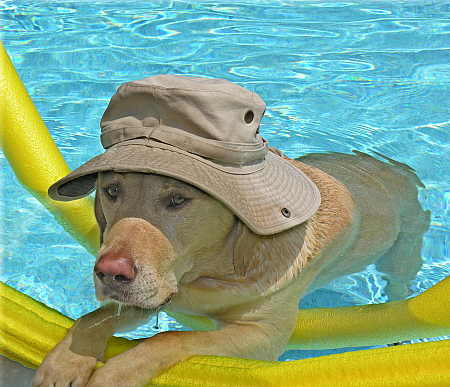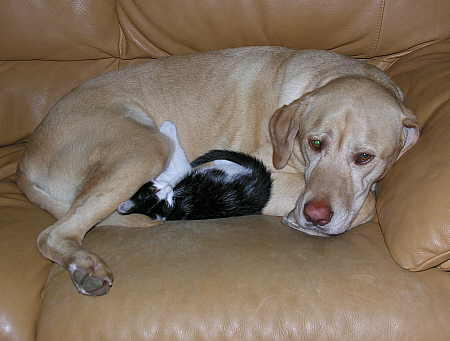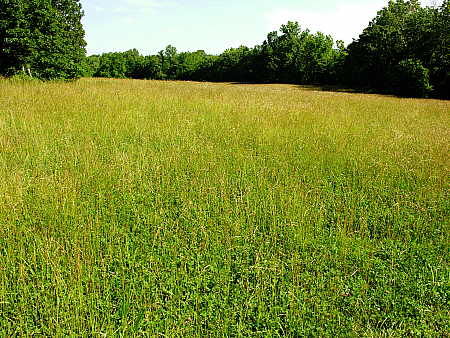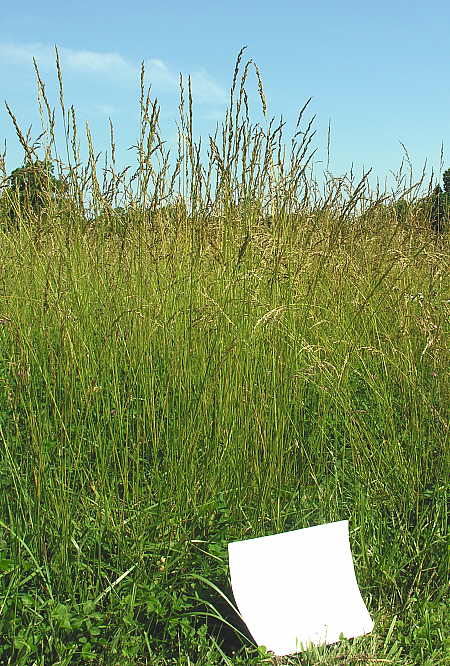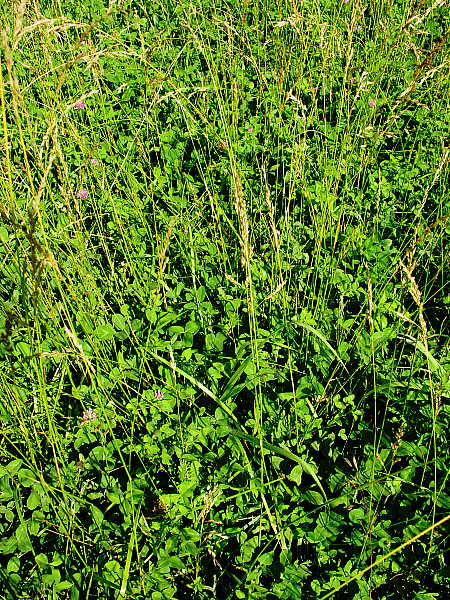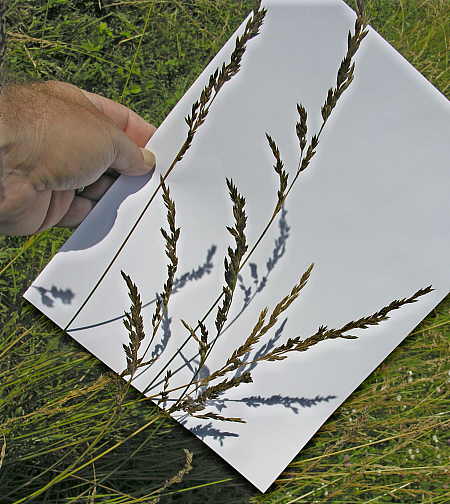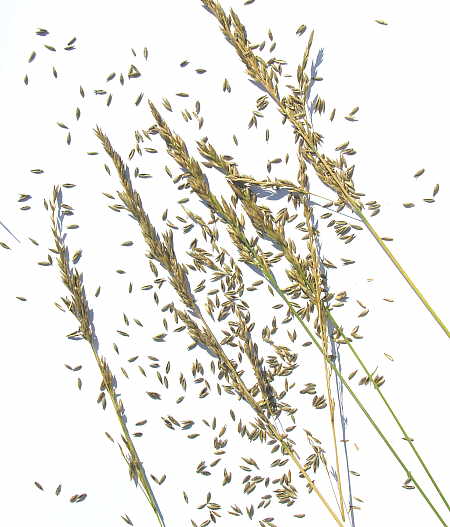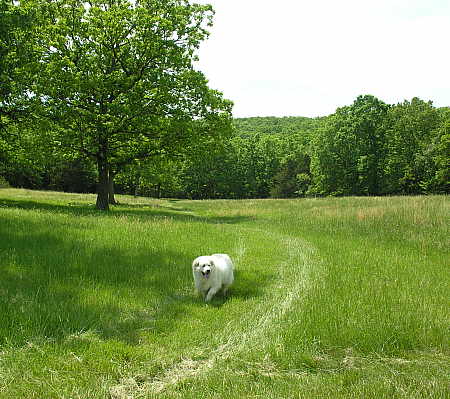William J. Clinton Presidential Center
 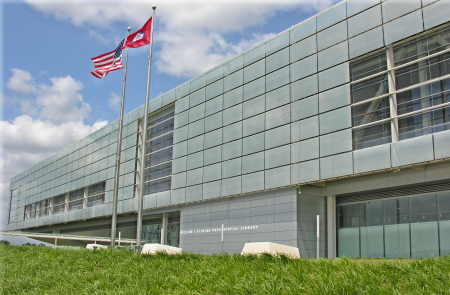
Today’s field trip takes us just south of the Ozarks to Little Rock, Arkansas, where we will visit the Clinton Presidential Library and Museum. The Clinton Library is the newest of eleven Presidential libraries administered by the U.S. National Archives and Records Administration. Besides the Clinton Library, I have visited the Herbert Hoover Presidential Library and birthplace cottage located in West Branch, Iowa, and the Ronald Reagan Presidential Library located in Simi Valley, California. The Harry S. Truman Presidential Library in Independence, Missouri is on my list for a visit in the near future, and I aspire to see the seven additional Presidential Libraries in the course of my lifetime.
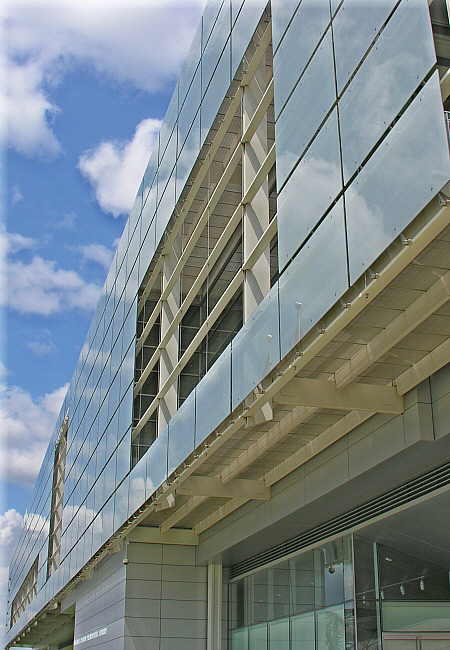
The first thing that one tends to notice upon arrival at the Clinton Library site is the unique architecture of the building itself. I have seen this building in photographs, in video, and through the lens of my camera. And none of these depictions of the building do it justice.  My meager photographic skills certainly can’t, but maybe they will whet your appetite to see for yourself some time.Â
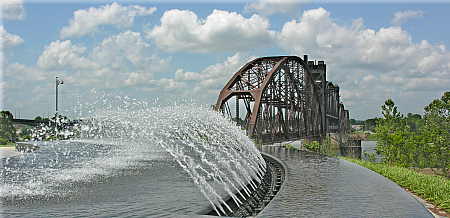
The grounds of the Clinton Presidential Center lie along the banks of the Arkansas River, next to an old railroad trestle that is in the process of renovation. The area is beautifully landscaped, and though it will take many years to achieve the mature lushness that surrounded the Hoover Library in Iowa, or the wonderfully aromatic rose garden at the Reagan Library in California, it is in a remarkably pretty location.
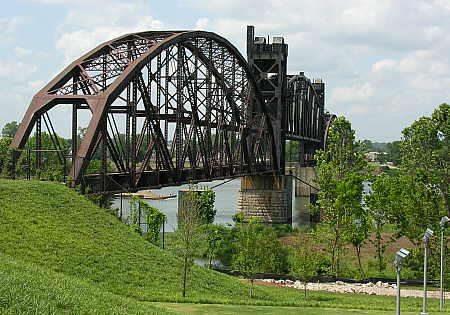
As you begin to acclimate to the unusual architecture, you begin to notice all kinds of little surprises, such as this interior/exterior transition which is viewable from upstairs only –
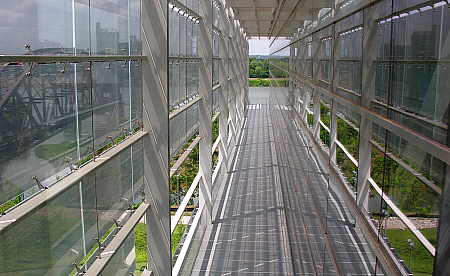
The public exhibits are contained on two floors, with an open mezzanine allowing for an unimpeded view of the facility. I was impressed by the spaciousness that this design presented, as opposed to the museum-like, one room leading into another room design of the Reagan or Hoover Libraries. It allows the visitor the opportunity to see where the crowds are gathered at any given moment, and to divert to an empty section of the Library, which makes the visit much more enjoyable.
It is interesting to note the bookcases that are situated at the ends of the exhibit sections, which hold the large blue binder shelves. Contained within these binders are some of the actual archived and indexed presidential documents.
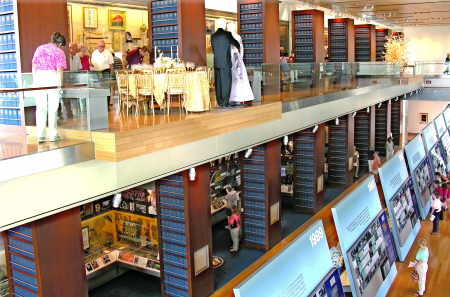
The Clinton Library and Museum exhibits seem to have been designed from the ground up to be a more hands-on, interactive experience than I encountered at either the Hoover or Reagan Libraries. The Cabinet Meeting Room is recreated in actual scale, and visitors are encouraged to sit around the cabinet table to explore the issues that were current at the time of the Clinton administration.
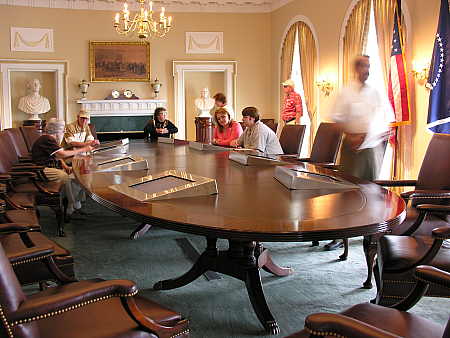
Interactive touch screen display panels are built into the Cabinet table, and a surprising amount of information is accessible directly from this system. You are encouraged to ask questions of the docents, who are knowledgeable about many aspects of the Clinton presidency and Presidential protocol.
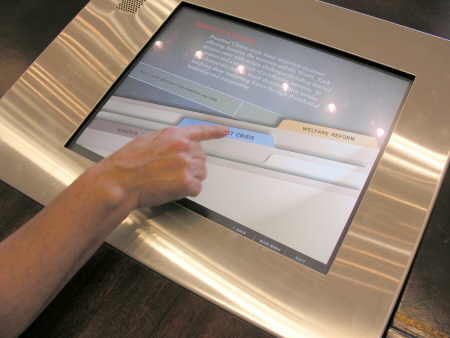
Scattered throughout the building are varied signs and symbols of America and the presidency, such as this rug that lays on the floor of the Oval Office replica.
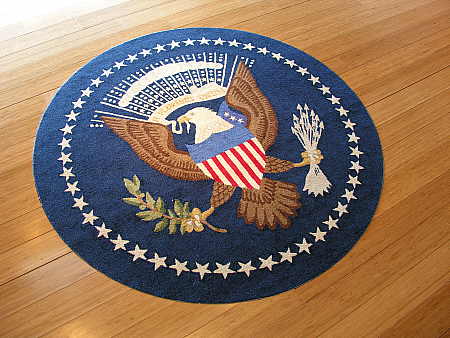
First Ladies in America have a history of White House re-decorating, from flooring to furnishings, from art to landscaping, and everything in between. But the one item that gets updated most often seems to be the White House formal dinnerware. The display at the Clinton Library of a complete formal table setting was gorgeous.  Since I am pretty sure I will never be invited to a White House dinner, it was nice to see how I might have dined if I were.
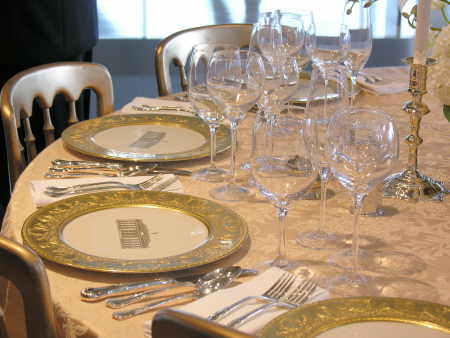
A self-admitted car guy, I couldn’t resist snapping a few pictures of the Presidential Limousine. Forget the sit-down dinner with all the fancy china and crystal and all, I would rather just be invited for a few laps around the block in this baby! Can you imagine what it would be like to be chauffeured around in the Presidential Limousine, motorcade entourage and all?
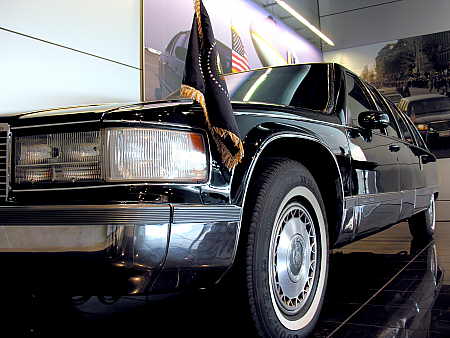
I guess no tour of a Presidential Library should end without some mention of politics, and this one won’t either. The concept of the Presidential Libraries administered by the U.S. National Archives and Records Administration is to make available to historians, scholars, and the American public the complete record of the subject administration, accessible in one convenient location. This has been achieved at the three Presidential Libraries that I have visited.
An additional function of these libraries, through the museum portion of the facilities, is to present a portrait, a legacy if you will, of the President depicted. The materials that are displayed to the public, and the manner in which they are displayed are generally under the control of a foundation created by the former President in question. It stands to reason that controversial positions of an administration are presented in the best available light by the library’s foundation. So in the sense that what is displayed, and how it is displayed is cherry-picked, you might argue that you are viewing revisionist history at times. I will not argue with that point of view, but I will point out that all three Presidential Libraries that I visited seemed to be equally adept at “shaping” events to suit the image they wanted to portray.
So my (unsolicited) advice is this – visit every Presidential Library you can, and take away from them all of the knowledge and history that they have to offer. Take off your political hat and put on your historian’s hat when you enter the front doors, and be thankful for the opportunity to get an inside peek at selected American presidencies.

